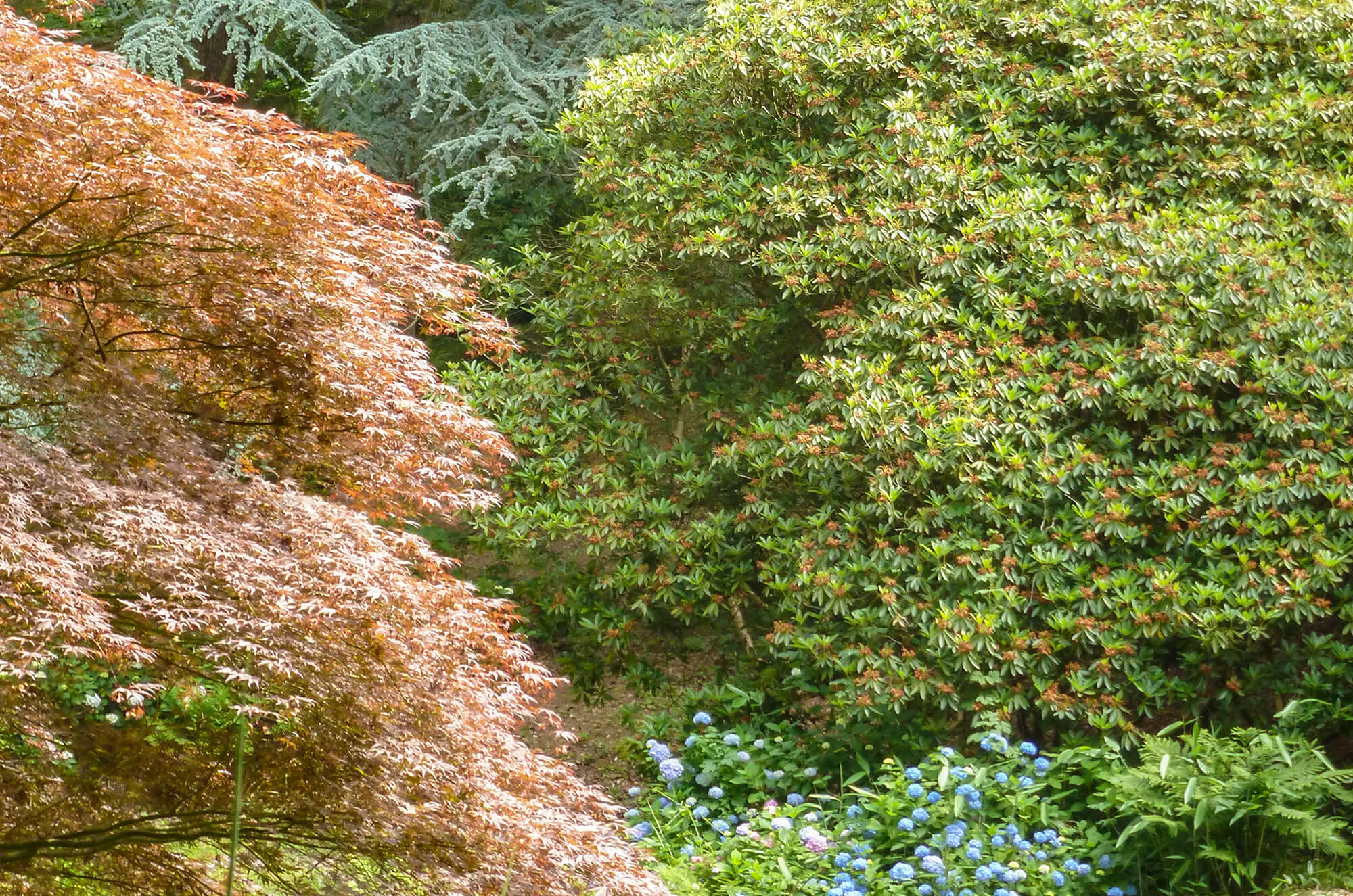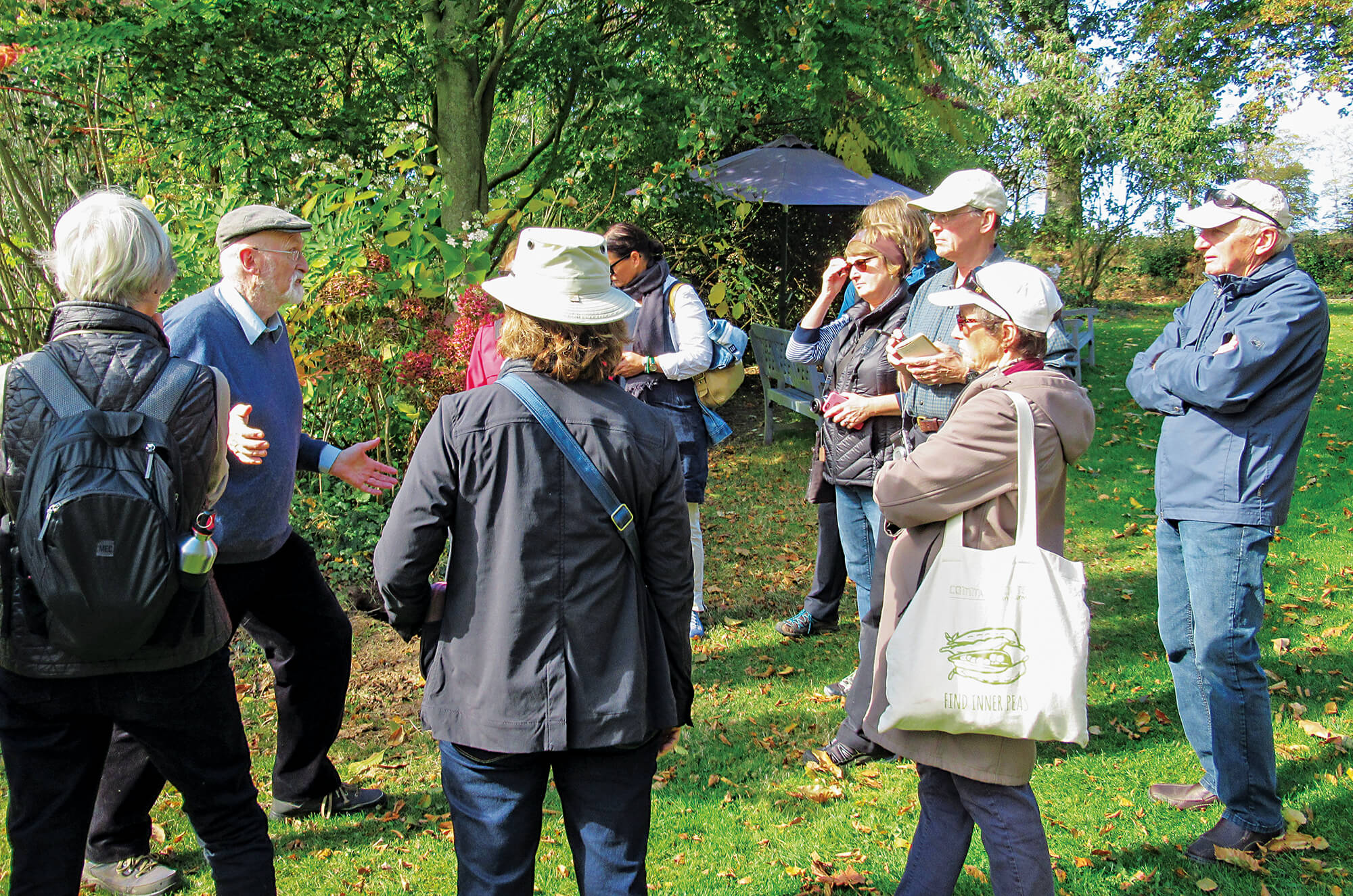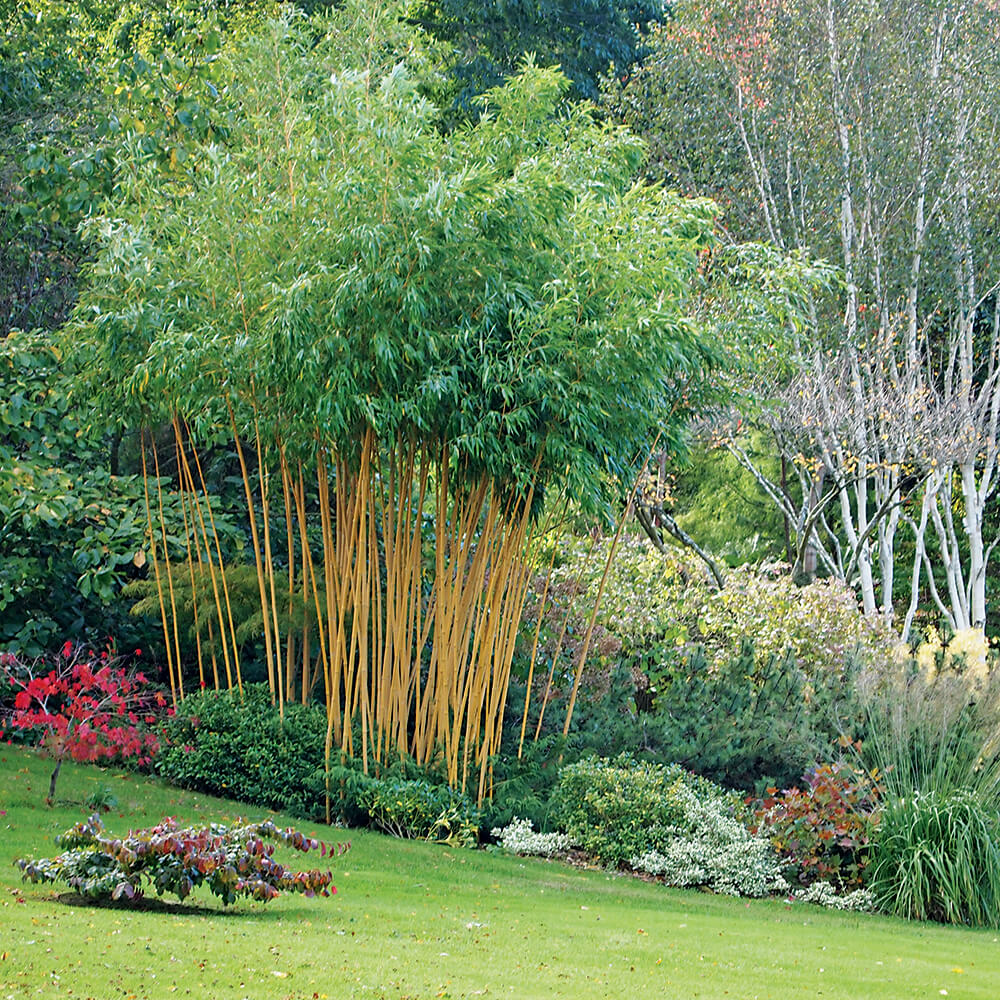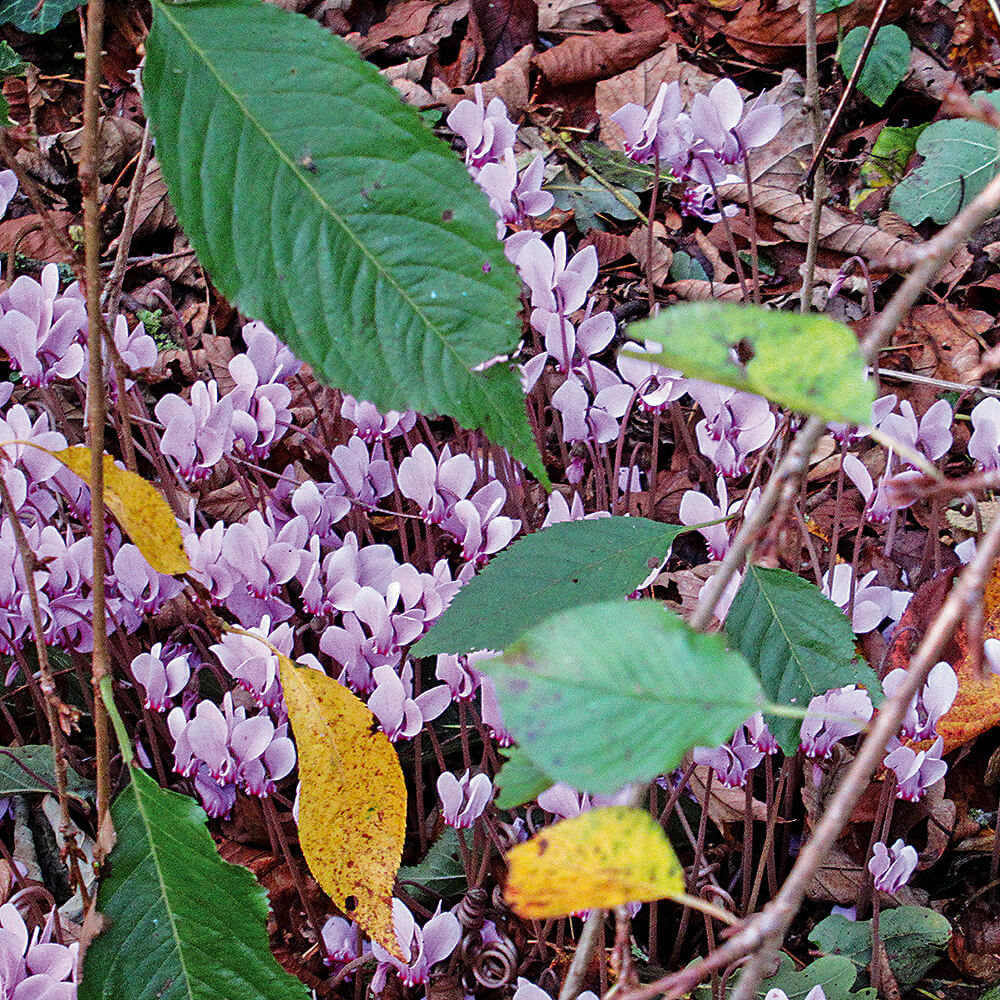December 1, 2019

Photo #1: Le Bois des Moutiers is a country manor and garden built by Guillaume Mallet starting in 1898, with the Arts and Crafts design team of Gertrude Jekyll and Edwin Lutyens.
Atlantic designers tour Normandy
BY BOB HOWARDThe Atlantic Association of Landscape Designers (AALD) visited gardens in Normandy, France, in October, 2018. In this article, we will mention a few tips about traveling to and staying in Varengeville, Normandy. Then we’ll describe some gardens we saw, highlighting some trees and shrubs that we might try here in Canada.
But first, let’s mention the garden that sparked our interest in the Varengeville area and led to the trip. Le Bois des Moutiers is a country manor and garden built by Guillaume Mallet starting in 1898 with the Arts and Crafts design team of Gertrude Jekyll and Edwin Lutyens. (Photo #1) In addition to the beautiful house and its interior, there is a sublime collection of trees, rhododendrons, hydrangeas, and other woodland plants. (Photo #2) Guillaume Mallet’s grandson, Robert Mallet, who with his wife Corinne, brought together the largest collection of species and varieties of hydrangeas in the world. This hydrangea garden, known as the Shamrock Association, is also located in Varengeville.
Our AALD group travelled by air to Paris, then by train to Dieppe and finally by bus to Varengeville. The bus let us off at the Place des Canadiens, a short walk to our lodging.
 Photo #2: The collection of trees, rhododendrons, hydrangeas, and other woodland plants is sublime.
Photo #2: The collection of trees, rhododendrons, hydrangeas, and other woodland plants is sublime.
During our week there, the owner of the houses we stayed in, Mme. Constance Kargère, showed us around her delightful, exuberant garden, which is featured in books by both Penelope Hobhouse and Rosemary Verey.
Before describing the gardens, how about some travel tips? Our first suggestion is to strike up conversations with gardeners. Mme Kargère, for example, was knowledgeable, witty and generous with her time. Moreover, many of the gardeners we met shared their knowledge with enthusiasm. This is a great benefit of garden travel — meeting other gardeners and hearing about their gardens. Second, take advantage of public transportation in France. It’s not as good as it was 20 years ago, but the trains and buses are still very comfortable, a good bargain, easier to manage than an automobile, and will take you almost anywhere. In our case, the bus from Dieppe took us nearly to our front door in the small village of Varengeville, at a cost of only two euros each. Third, for a hotel in Varengeville, check out the website for La Terrasse. It overlooks the ocean. You can walk to all the gardens in Varengeville. The stay there is a “demi-pension,” which means that for a moderate price you get not only lodging but also breakfast and your choice of lunch or dinner each day. The owners are gracious, kind people.
In 2013, one of our members joined the Shamrock Association and met Robert Mallet. For the 2018 AALD trip, Robert Mallet agreed to be our guide for much of the visit in Varengeville, and even suggested we might stay in two manor houses owned by his sister (that same Mme. Kargère). He also recruited Brian Woy, the president of the Shamrock Association, as our second driver for two days visiting areas beyond walking distance. We had the best guide-companions for this trip. Robert Mallet was key. Expert, well-connected and unfailingly helpful to us, he made our trip a success.
 Photo #3: Robert Mallet showed the group around the Shamrock hydrangea collection.
Photo #3: Robert Mallet showed the group around the Shamrock hydrangea collection.
The day following our arrival, after a perfect lunch in a restaurant-artist’s studio called Le Piment Bleu, Robert Mallet took us around the Shamrock hydrangea collection. (Photo #3) The garden is in Zone 8, so lots of things were still blooming in October, especially mophead hydrangeas. (Photos #4) Corinne has been to Japan several times, bringing back many plants. The extensive display of hydrangea species at the Shamrock collection provokes ambitions of finding hardy varieties to bring in and test in our Maritime climates.
During our week in Normandy, we visited numerous cultural sites such as L’Èglise St. Valéry with stained glass windows by Georges Braque, the Rouen Cathedral which was painted by Monet, and the beautiful Alabaster Coast, as it is known on the French side of the Channel.
A woodland garden, called L’Ètang de Launay, was within easy walking distance from our lodging. Dramatic examples of tree bark stand out in the woodland light of this sublime garden park, planted with birches, Japanese maples, Prunus, rhododendrons, bamboo, hydrangeas and more. (Photo #5) In addition to the photo of the garden, we’ve included one of Betula jacquemontii with its dramatic white bark. Betula albosinensis, the Chinese red birch, is another birch we would like to test here. Trees like this have now put us hunting for things like Betula utilis ‘Bhutan Sienna’, B. u. ssp. utilis ‘Chris Lane’, and Prunus serrula, the birchbark or Tibetan cherry. Perhaps this little sample of colourful barked trees will encourage landscapers to try to locate and plant some of these dramatic specimens.
The last garden we visited is probably the most famous. Known as Le Vasterival, created by Princess Greta Sturdza beginning in 1955, this garden was also within walking distance of our lodging. Its website www.vasterival.fr/en presents an extensive photo album of rhododendrons and azaleas, as well as many seasonal photos of the garden. We’ve included a photo of the bark of Clethra barbinervis and one of a cyclamen on the woodland floor to suggest that this place has a rich selection of plants.
Like Le Vasterival, many of the gardens we saw in Varengeville have remarkable plant collections. Overall, we felt a genuine connection to the area. Our hosts and guides showed us an engaging story of the horticultural traditions, cultural history and ties to Canadians around Dieppe. We all loved walking through these beautiful stroll gardens.



